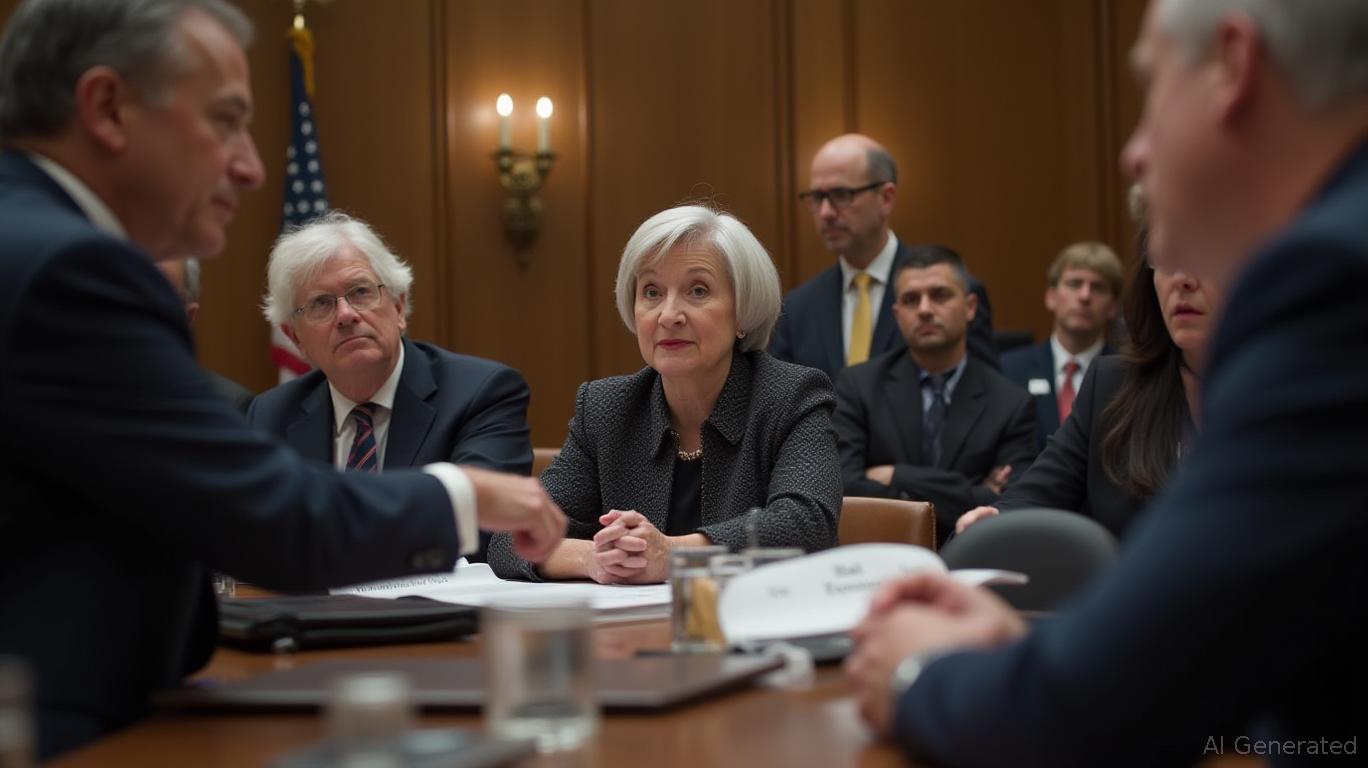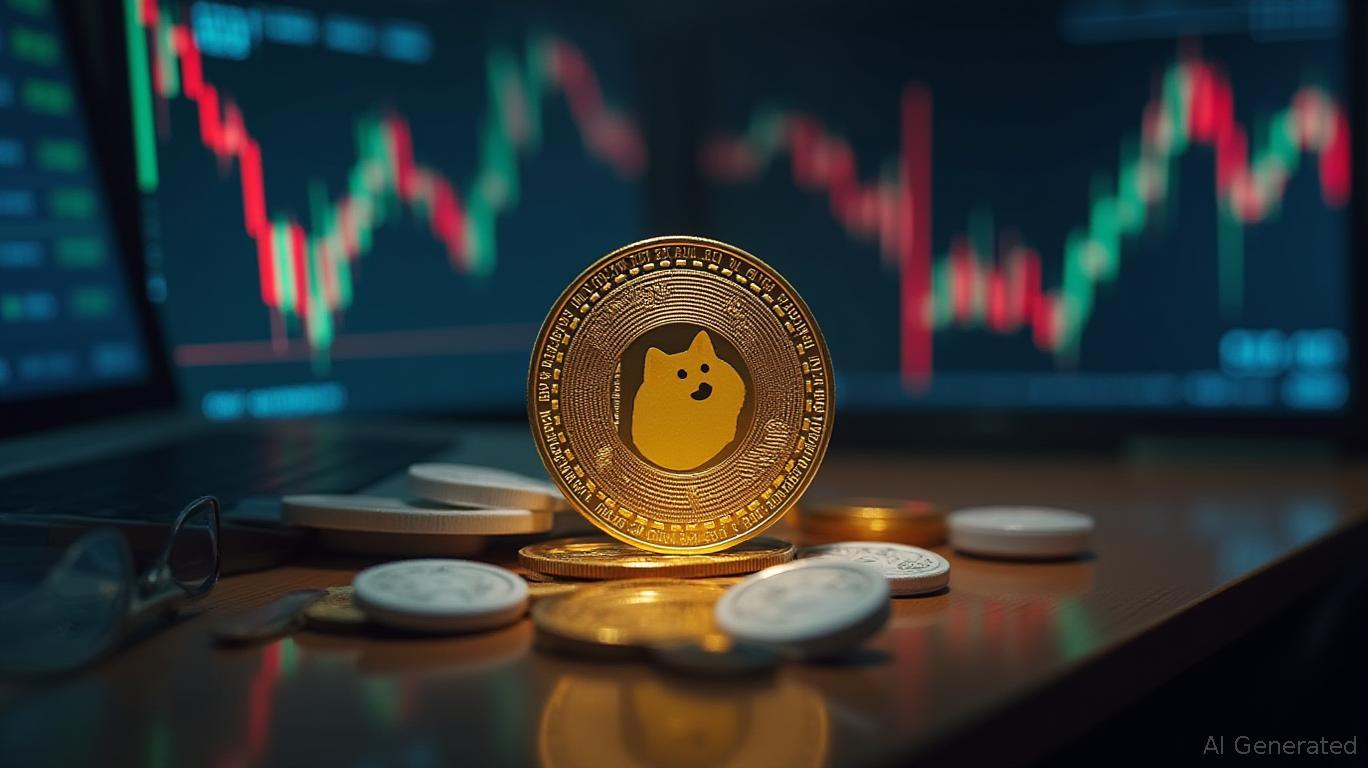South Korea's Rapid Growth in Stablecoins Meets Regulatory Hesitation
- South Korea is rising as a key stablecoin hub, balancing innovation with regulatory scrutiny as Tether and local projects reshape global finance. - Tether now holds $135B in U.S. Treasuries, surpassing nations like South Korea and UAE, positioning it as a major Treasury market influencer. - BDACS launched KRW1, a won-pegged stablecoin on Circle's Arc blockchain, aiming to integrate Korean businesses into global blockchain networks. - Bank of Korea warns of depegging risks for private stablecoins, contras
South Korea is quickly becoming a significant force in the worldwide stablecoin sector, as recent events highlight its balanced strategy of fostering digital currency advancements while addressing regulatory hurdles. Leading this trend is
As the largest stablecoin provider globally, Tether currently possesses $135 billion in U.S. Treasury securities, surpassing both South Korea and the United Arab Emirates to become the

At the same time, South Korea is charting its own course in stablecoin development. BDACS, a prominent digital asset custodian, has introduced
Regulation remains a key consideration. While Tether's growth aligns with U.S. initiatives supporting stablecoin-backed Treasuries, South Korea's central bank has voiced reservations. A June 2025
These developments carry significant global weight. Tether's accumulation of Treasuries highlights the increasing influence of stablecoins in mainstream finance, with some experts, as reported by Yahoo Finance, forecasting that the sector could generate $2 trillion in demand for U.S. debt by 2028. For South Korea, the introduction of KRW1 is a strategic move to harness blockchain for economic advancement, even as regulators strive to balance progress with financial stability.
As the stablecoin industry evolves, South Korea's method—carefully weighing government prudence against private sector drive—illustrates the ongoing challenge between innovation and regulatory control. With Tether and local projects like KRW1 transforming financial landscapes, South Korea's regulatory choices may serve as a model for other countries navigating the convergence of digital assets and traditional finance.
Disclaimer: The content of this article solely reflects the author's opinion and does not represent the platform in any capacity. This article is not intended to serve as a reference for making investment decisions.
You may also like
Global authorities adjust cryptocurrency regulations to strike a balance between fostering innovation and maintaining stability
- Global regulators are adjusting crypto frameworks to balance innovation and risk management, with Hong Kong, Switzerland, Brazil, and the EU implementing new measures. - Hong Kong’s SFC allows local exchanges to access global liquidity pools but faces low adoption compared to India and Japan. - Switzerland’s AMINA secures EU MiCA compliance, highlighting maturing markets amid calls for stricter oversight. - Brazil’s 30% tax on undeclared crypto aims to formalize the sector but risks burdening small inves

XRP News Today: Enhanced Custody Solutions Propel Ripple’s Institutional Blockchain Expansion
- Ripple acquires Palisade to enhance institutional crypto custody and payments, announced on Nov 3, 2025. - Palisade's WaaS technology integrates into Ripple's solutions, supporting multi-chain assets and DeFi. - The $4B expansion includes key acquisitions like Hidden Road and Rail, targeting institutional compliance. - Post-SEC settlement, Ripple focuses on growth, with RLUSD exceeding $1B and XRP as top-4 crypto. - The move aligns with traditional finance's blockchain adoption, leveraging 75+ global lic

Treasury Reduces Borrowing Thanks to $891B Cash Reserve and Federal Liquidity Program
- U.S. Treasury cuts Q4 2024 borrowing estimate to $569B, citing $891B cash buffer exceeding $850B target. - Fed plans 2026 Treasury purchases ($35B/month) to stabilize liquidity, reducing market financing pressure. - 10-year Treasury yields fell to 4.1% as fiscal-monetary coordination eases debt concerns. - Supreme Court's Trump tariff review poses revenue uncertainty, potentially altering future borrowing needs.

Dogecoin News Today: Dogecoin Drops 8% as Major Investors Sell Off Meme-Coin Holdings
- Dogecoin (DOGE) dropped 8% to $0.1697 as institutions offloaded $440M in tokens, triggering algorithmic liquidation and a 426% surge in trading volume. - Technical analysts highlighted the breakdown below $0.18—a key support since October—and noted sustained seller dominance amid $22.27M in daily outflows. - Webull expanded DOGE derivatives access for U.S. retail investors, while Brag House merged with House of Doge to build institutional-grade crypto infrastructure. - Short-term bearish momentum persist
